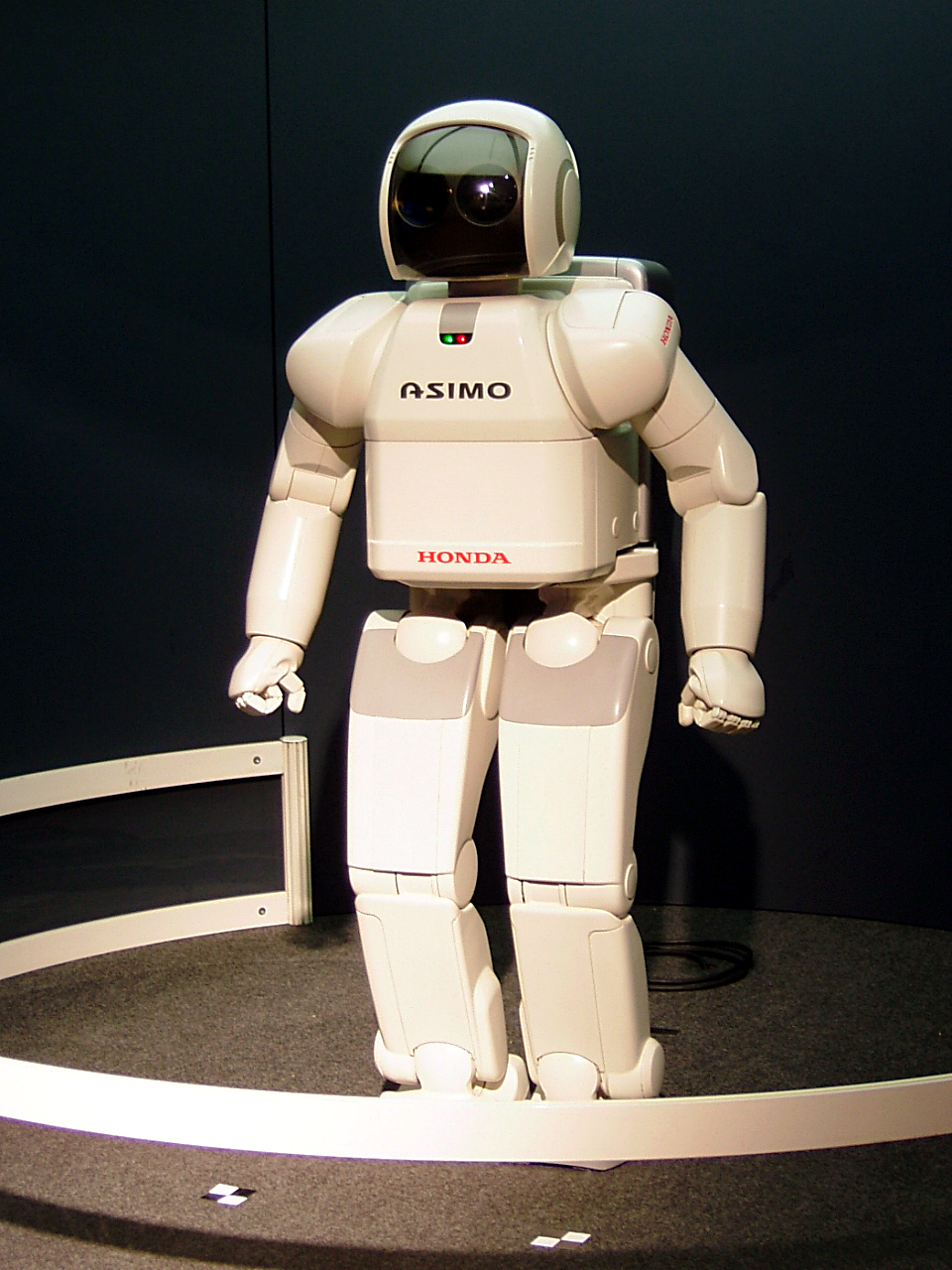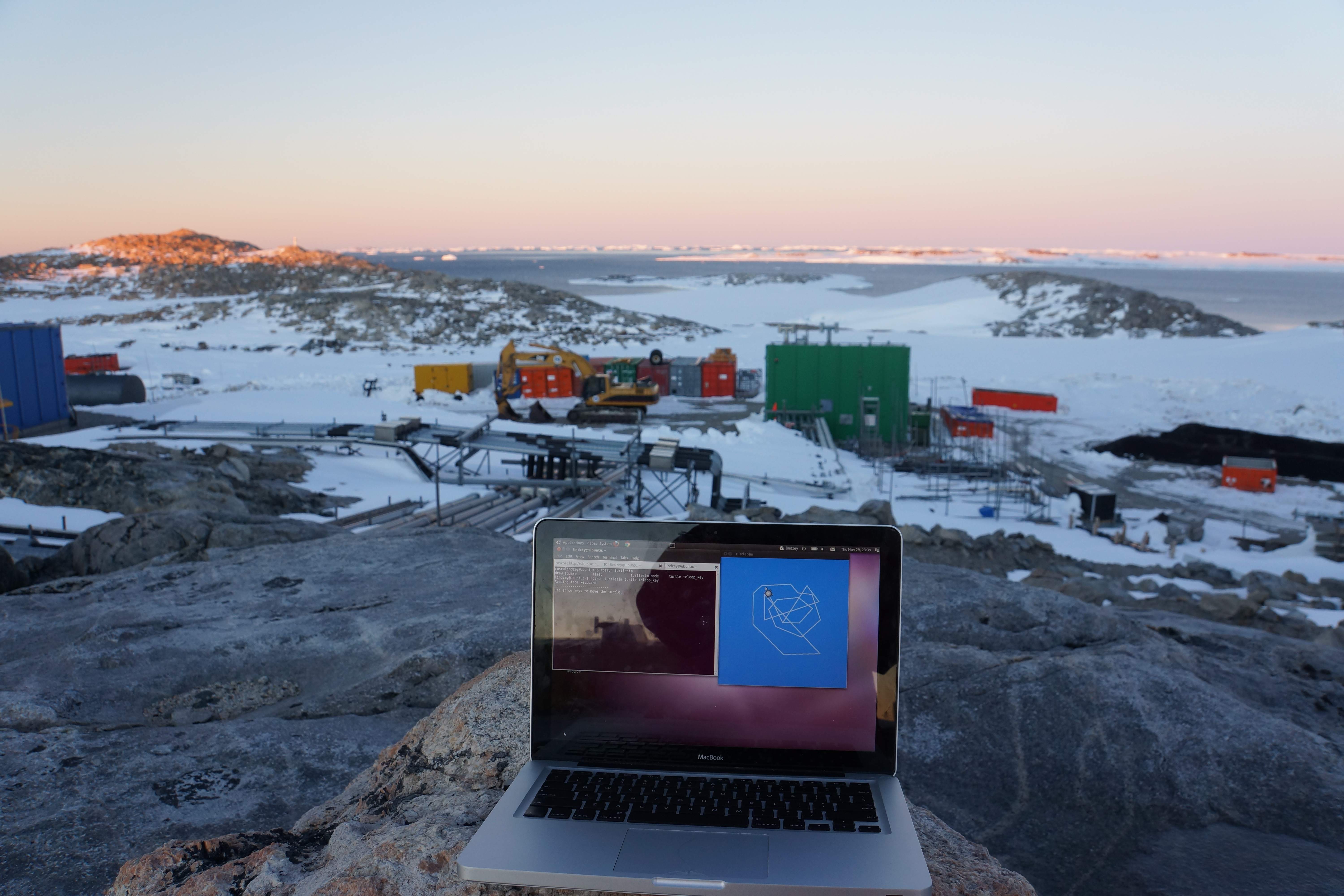|
Hugh (robot)
Hugh is an artificial intelligence robot librarian designed by William Sachiti and Ariel Ladegaard at Aberystwyth University. Funded by Academy of Robotics in the UK, the robot was first publicized in February 2016. Hugh was to stand at 1.4 metres tall and weigh 60 pounds, and its core function would be to help users in locating and navigating them to desired books in the library. Hugh never left the prototyping stage and is currently not in use in any Aberystwyth University library. Technology Hugh runs the linux based Robot Operating System (ROS) with a combination of modules built on top combining voice search through Google APIs, and navigation. The robot uses a mini lidar Lidar (, also LIDAR, or LiDAR; sometimes LADAR) is a method for determining ranges (variable distance) by targeting an object or a surface with a laser and measuring the time for the reflected light to return to the receiver. It can also be ... for location and prebuilt maps of library la ... [...More Info...] [...Related Items...] OR: [Wikipedia] [Google] [Baidu] |
William Sachiti
Pasihapaori Chidziva (born May 1985), known as Pasi William Sachiti, is a Zimbabwean born British entrepreneur. Sachiti has worked on several ventures, including Clever Bins (an advertising solution for public spaces), an automated library assistant and the Academy of Robotics - a driverless car company . Biography Career = Early ventures = In 2009, Sachiti appeared on the BBC investment programme Dragons' Den seeking investment for an advertising company - Clever Bins. Clever Bins manufactured solar-powered digital advertising bins intended for public spaces. Unfortunately, the pitch was described by Peter Jones as "the biggest load of bull I've ever heard in the Den", and as a result Sachiti was unable to secure funding. The company continued to trade for three years, before closing in 2013. In 2013, Sachiti founded mycityvenue, a digital concierge and holiday company which was eventually acquired by UK holiday company Secret Escapes. In 2015, Sachiti studied at ... [...More Info...] [...Related Items...] OR: [Wikipedia] [Google] [Baidu] |
Service Robot
Service robots assist human beings, typically by performing a job that is dirty, dull, distant, dangerous or repetitive. They typically are autonomous and/or operated by a built-in control system, with manual override options. The term "service robot" does not have a strict technical definition. The International Organization for Standardization defines a “service robot” as a robot “that performs useful tasks for humans or equipment excluding industrial automation applications”.Provisional definition of Service Robots English, 24 September 2018 According to ISO 8373 robots require “a degree of autonomy”, which is the “ability to perform intended tasks based on current state and sensing, without human intervention”. For serv ... [...More Info...] [...Related Items...] OR: [Wikipedia] [Google] [Baidu] |
Artificial Intelligence
Artificial intelligence (AI) is intelligence—perceiving, synthesizing, and inferring information—demonstrated by machines, as opposed to intelligence displayed by animals and humans. Example tasks in which this is done include speech recognition, computer vision, translation between (natural) languages, as well as other mappings of inputs. The ''Oxford English Dictionary'' of Oxford University Press defines artificial intelligence as: the theory and development of computer systems able to perform tasks that normally require human intelligence, such as visual perception, speech recognition, decision-making, and translation between languages. AI applications include advanced web search engines (e.g., Google), recommendation systems (used by YouTube, Amazon and Netflix), understanding human speech (such as Siri and Alexa), self-driving cars (e.g., Tesla), automated decision-making and competing at the highest level in strategic game systems (such as chess and Go). ... [...More Info...] [...Related Items...] OR: [Wikipedia] [Google] [Baidu] |
Robot
A robot is a machine—especially one programmable by a computer—capable of carrying out a complex series of actions automatically. A robot can be guided by an external control device, or the control may be embedded within. Robots may be constructed to evoke human form, but most robots are task-performing machines, designed with an emphasis on stark functionality, rather than expressive aesthetics. Robots can be autonomous or semi-autonomous and range from humanoids such as Honda's ''Advanced Step in Innovative Mobility'' ( ASIMO) and TOSY's ''TOSY Ping Pong Playing Robot'' ( TOPIO) to industrial robots, medical operating robots, patient assist robots, dog therapy robots, collectively programmed ''swarm'' robots, UAV drones such as General Atomics MQ-1 Predator, and even microscopic nano robots. By mimicking a lifelike appearance or automating movements, a robot may convey a sense of intelligence or thought of its own. Autonomous things are expected to proliferat ... [...More Info...] [...Related Items...] OR: [Wikipedia] [Google] [Baidu] |
Librarian
A librarian is a person who works professionally in a library providing access to information, and sometimes social or technical programming, or instruction on information literacy to users. The role of the librarian has changed much over time, with the past century in particular bringing many new media and technologies into play. From the earliest libraries in the ancient world to the modern information hub, there have been keepers and disseminators of the information held in data stores. Roles and responsibilities vary widely depending on the type of library, the specialty of the librarian, and the functions needed to maintain collections and make them available to its users. Education for librarianship has changed over time to reflect changing roles. History The ancient world The Sumerians were the first to train clerks to keep records of accounts. ''"Masters of the books"'' or "keepers of the tablets" were scribes or priests who were trained to handle the vast amount an ... [...More Info...] [...Related Items...] OR: [Wikipedia] [Google] [Baidu] |
Aberystwyth University
Aberystwyth University ( cy, Prifysgol Aberystwyth) is a Public university, public Research university, research university in Aberystwyth, Wales. Aberystwyth was a founding member institution of the former federal University of Wales. The university has over 8,000 students studying across three academic faculties and 17 departments. Founded in 1872 as University College Wales, Aberystwyth, it became a founder member of the University of Wales in 1894, and changed its name to the ''University College of Wales, Aberystwyth''. In the mid-1990s, the university again changed its name to become the ''University of Wales, Aberystwyth''. On 1 September 2007, the University of Wales ceased to be a federal university and Aberystwyth University became independent again. In 2019, it became the first university to be named "University of the year for teaching quality" by ''The Times/Sunday Times Good University Guide'' for two consecutive years. It is the first university in the world to be aw ... [...More Info...] [...Related Items...] OR: [Wikipedia] [Google] [Baidu] |
Linux
Linux ( or ) is a family of open-source Unix-like operating systems based on the Linux kernel, an operating system kernel first released on September 17, 1991, by Linus Torvalds. Linux is typically packaged as a Linux distribution, which includes the kernel and supporting system software and libraries, many of which are provided by the GNU Project. Many Linux distributions use the word "Linux" in their name, but the Free Software Foundation uses the name "GNU/Linux" to emphasize the importance of GNU software, causing some controversy. Popular Linux distributions include Debian, Fedora Linux, and Ubuntu, the latter of which itself consists of many different distributions and modifications, including Lubuntu and Xubuntu. Commercial distributions include Red Hat Enterprise Linux and SUSE Linux Enterprise. Desktop Linux distributions include a windowing system such as X11 or Wayland, and a desktop environment such as GNOME or KDE Plasma. Distributions intended for ... [...More Info...] [...Related Items...] OR: [Wikipedia] [Google] [Baidu] |
Robot Operating System
Robot Operating System (ROS or ros) is an open-source robotics middleware suite. Although ROS is not an operating system (OS) but a set of software frameworks for robot software development, it provides services designed for a heterogeneous computer cluster such as hardware abstraction, low-level device control, implementation of commonly used functionality, message-passing between processes, and package management. Running sets of ROS-based processes are represented in a graph architecture where processing takes place in nodes that may receive, post, and multiplex sensor data, control, state, planning, actuator, and other messages. Despite the importance of reactivity and low latency in robot control, ROS is ''not'' a real-time operating system (RTOS). However, it is possible to integrate ROS with real-time code. The lack of support for real-time systems has been addressed in the creation of ROS 2, a major revision of the ROS API which will take advantage of modern librarie ... [...More Info...] [...Related Items...] OR: [Wikipedia] [Google] [Baidu] |
Google APIs
Google APIs are application programming interfaces ( APIs) developed by Google which allow communication with Google Services and their integration to other services. Examples of these include Search, Gmail, Translate or Google Maps. Third-party apps can use these APIs to take advantage of or extend the functionality of the existing services. The APIs provide functionality like analytics, machine learning as a service (the Prediction API) or access to user data (when permission to read the data is given). Another important example is an embedded Google map on a website, which can be achieved using the Static Maps API, Places API or Google Earth API. Authentication and authorization Usage of all of the APIs requires authentication and authorization using the Oauth 2.0 protocol. Oauth 2.0 is a simple protocol. To start, it is necessary to obtain credentials from the Developers Console. Then the client app can request an access Token from the Google Authorization Server, an ... [...More Info...] [...Related Items...] OR: [Wikipedia] [Google] [Baidu] |
Lidar
Lidar (, also LIDAR, or LiDAR; sometimes LADAR) is a method for determining ranges (variable distance) by targeting an object or a surface with a laser and measuring the time for the reflected light to return to the receiver. It can also be used to make digital 3-D representations of areas on the Earth's surface and ocean bottom of the intertidal and near coastal zone by varying the wavelength of light. It has terrestrial, airborne, and mobile applications. ''Lidar'' is an acronym of "light detection and ranging" or "laser imaging, detection, and ranging". It is sometimes called 3-D laser scanning, a special combination of 3-D scanning and laser scanning. Lidar is commonly used to make high-resolution maps, with applications in surveying, geodesy, geomatics, archaeology, geography, geology, geomorphology, seismology, forestry, atmospheric physics, laser guidance, airborne laser swath mapping (ALSM), and laser altimetry. It is also used in control and navigation for som ... [...More Info...] [...Related Items...] OR: [Wikipedia] [Google] [Baidu] |
Ex Libris Group
Ex Libris Group is an Israeli software company that develops integrated library systems and other library software. The company is headquartered in Jerusalem, and has ten other offices around the world. In October 2015, Ex Libris was acquired by ProQuest which in turn was acquired by Clarivate in December 2021. History Ex Libris started as an internal project at the Hebrew University of Jerusalem in 1980 to develop a new library management system, as no system at the time was able to handle both Hebrew and Latin character sets as required by the university. The software was called Automated Library Expandable Program or ALEPH-100 ("Aleph" is also the name of the first letter of many Semitic alphabets). In 1983, Yissum (the technology transfer company of the Hebrew University) founded Aleph-Yissum Ltd., a new company to commercialize the software. Yohanan Spruch, the original developer of ALEPH, became the company's chief technology officer. Between 1983 and 1988, all eight Isra ... [...More Info...] [...Related Items...] OR: [Wikipedia] [Google] [Baidu] |





.jpg)

